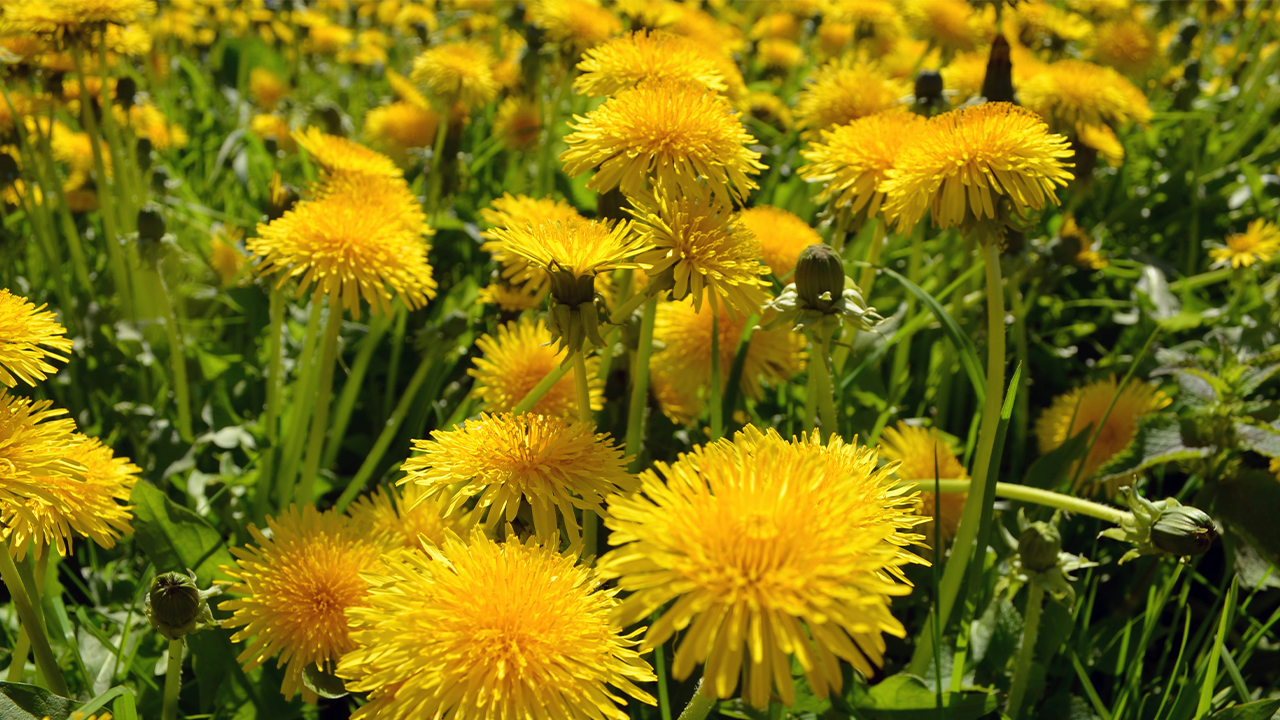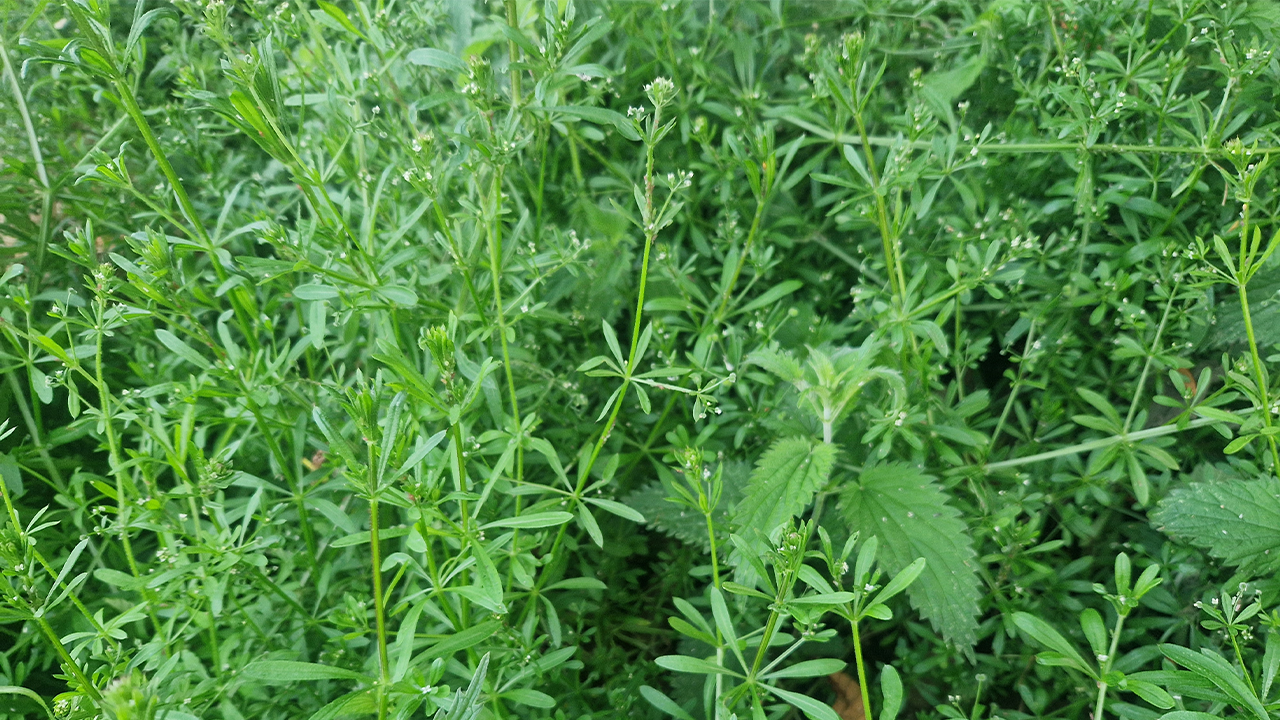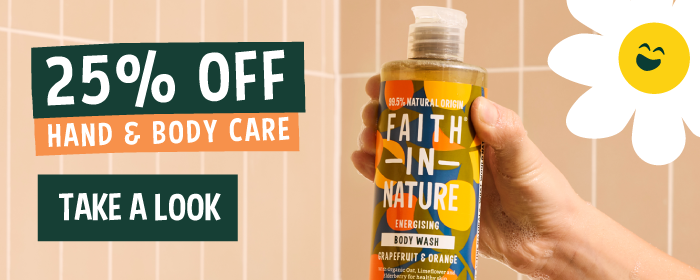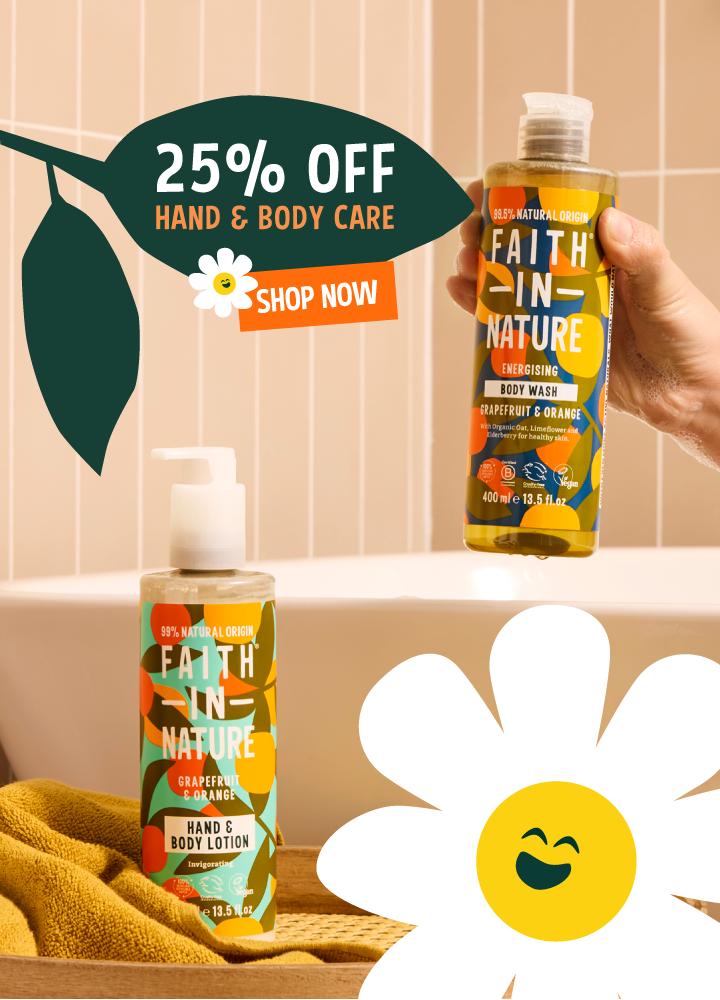
3, June 2025
The Wonder of Weeds: Nature's Unsung Heroes
Weeds are some of the most misunderstood and underrated plants in Nature. From living fossils to bee-friendly flowers, they’re fascinating – and often brilliant for biodiversity. Here’s our guide to some of the most amazing weeds in the UK. You’ll never look at an overgrown verge in the same way again!
WHAT IS A WEED?
The term ‘weed’ doesn’t refer to a particular type of vegetation, but any plant that’s growing where it’s not wanted. Yep, a weed’s status is in the eye of the beholder. A groundskeeper’s nightmare might be a biodiversity gardener’s dream.
Of course, not all weeds are angelic: invasive Japanese knotweed can damage buildings and offers little to the ecosystem, for example. But many are quiet heroes of the natural world. The list of fascinating UK weeds is long, but here are some of our favourites.

Early horsetail shoots, often mistaken for mushrooms
HORSETAIL – A LIVING FOSSIL

Early shoots of this native UK (but otherworldly-looking) plant are often mistaken for mushrooms. Full-grown plants resemble miniature fir trees. A ‘living fossil’, it’s from a group of plants that have been around more than 325 million years – since before the dinosaurs!
Horsetail grows rapidly. It can cross borders, dominate gardens and be difficult to remove – but it’s a fascinating plant that provides food and habitat for many invertebrates. Frogs and newts love to shelter in it (making it perfect near ponds) and its rhizomes (underground, horizontal stems) can help prevent erosion, retain soil moisture and support other plants.
If you fancy growing your very own miniature prehistoric forest, the RHS recommends strategic weeding to manage horsetail and let it live in harmony with other plants.
CLEAVERS – THAT STICKY ONE

Clever cleavers is a botanical hitchhiker. This native wildflower’s hooked fruits and leaves stick to passing animals – and humans to spread seeds. Yep, this is the plant, also dubbed ‘sticky bobs’ and ‘sticky willy’, that children (and some adults!) love to throw at each other.
Its stickiness means cleavers often ends up growing where it’s not wanted, smothering smaller plants. But dense patches provide habitat for invertebrates and its tiny flowers attract small bees and beetles. Caterpillars, including those of the hummingbird hawk-moth, eat it. Cleavers can make great garden mulch and, high in nitrogen, it’s a useful addition to the compost heap.
Thankfully, short roots make pulling up excess cleavers plants easy – just check yourself for sticky fruits when you’re done.
DANDELIONS – BIODIVERSITY BEACONS

Dandelions are vital to early pollinators like bees, butterflies, hoverflies and more. Their early-blooming pompom heads are actually clusters of up to 200 individual mini flowers (florets) – and a haven for minibeasts (up to 100 per head at any time!). Long taproots draw nutrients from deep underground, supporting other plants.
Dandelions’ parachute-shaped seeds float through the air, which is how they end up growing where they’re not wanted. Widely considered a blight on lawns, they’re bright, bee-friendly plants and an important part of the ecosystem.
Some people report success killing dandelions with washing up liquid or natural household cleaning staples like white vinegar and bicarbonate of soda, but taproots mean they’ll likely return. If you'd rather not to have lots of dandelions in your garden, deadhead flowers before they become seed-spreading clocks and uproot seedlings while they’re small.
NETTLES – MORE THAN A STING

Nettles are best known for their sting, but they’re vital for wildlife. They’re the main food source for many caterpillars, including those of red admiral and peacock butterflies. The plants attract aphids, which are eaten by ladybirds, hoverflies and birds, and provide shelter for small birds like dunnocks and wrens.
Thanks to rhizomes and lightweight, resilient seeds, nettles spread fast. They can outcompete small plants and are widely disliked because of their sting, but they can be a gardeners’ friend. Rich in nutrients, they make excellent compost and plant food. A patch in a sunny spot will attract butterflies and become its own ecosystem.
To keep nettles in check, grow in a container or cover the ground surrounding your patch with rocks or tarpaulin to stop new shoots emerging.
HERB ROBERT – THE FREE SPIRIT

This easy-going wildflower doesn’t care where it grows: it’ll take a sunlit crack in the pavement just as happily as a damp, shady flowerbed. Rich in nectar and often appearing where other flowers are scarce, it's loved by hoverflies and solitary bees – and provides habitat for spiders and beetles. The plant has a musty smell which is likened to burnt rubber – yet it's related to the aromatic geranium!
Herb Robert’s cranesbill-shaped seedpods explode when they’re ripe, catapulting seeds all around. That’s why you’ll see its lacy leaves and pretty purplish-pink flowers just about everywhere, from spring through to autumn.
Considered a weed by many, Herb Robert is sold in garden centres – so if it self-seeds in your space, count yourself lucky. If you’d like to get rid of it, shallow roots make it a doddle to pull up.
IDENTIFY WEEDS BY PHOTO
Found a plant that you think might be deemed a weed? Download a plant-identifying app like Pl@ntnet to easily identify it, then find out more about its benefits to Nature.
GIVE WEEDS A CHANCE
If you’d like to find out more about managing your garden for Nature, consult Plantlife’s No Mow May Movement Calendar. Their #NoMowMay campaign encourages letting lawns grow wild in May to provide for pollinators – the calendar includes tips for Nature-friendly gardening all year round.
If you enjoyed this, you might like:
10 of The Best Flowers to Plant for Bees
Save the Bees! Protecting Our Precious Pollinators
How to Grow Mint Plants That Just Keep Giving



